Exporting a session
Exporting is the process of saving a region, track, or entire session to a file on your computer which you can listen to, burn as a CD-R, or convert to an MP3 to share on a website.
Export the Entire Session
Once you have finished your composition, the most common export operation is to export the entire session to an audio file.
Bird’s Eye View of Entire Session
At this point it’s a good idea to zoom out and take a look at your whole session before exporting.
- Select “All” from the “Number of visible tracks” menu:
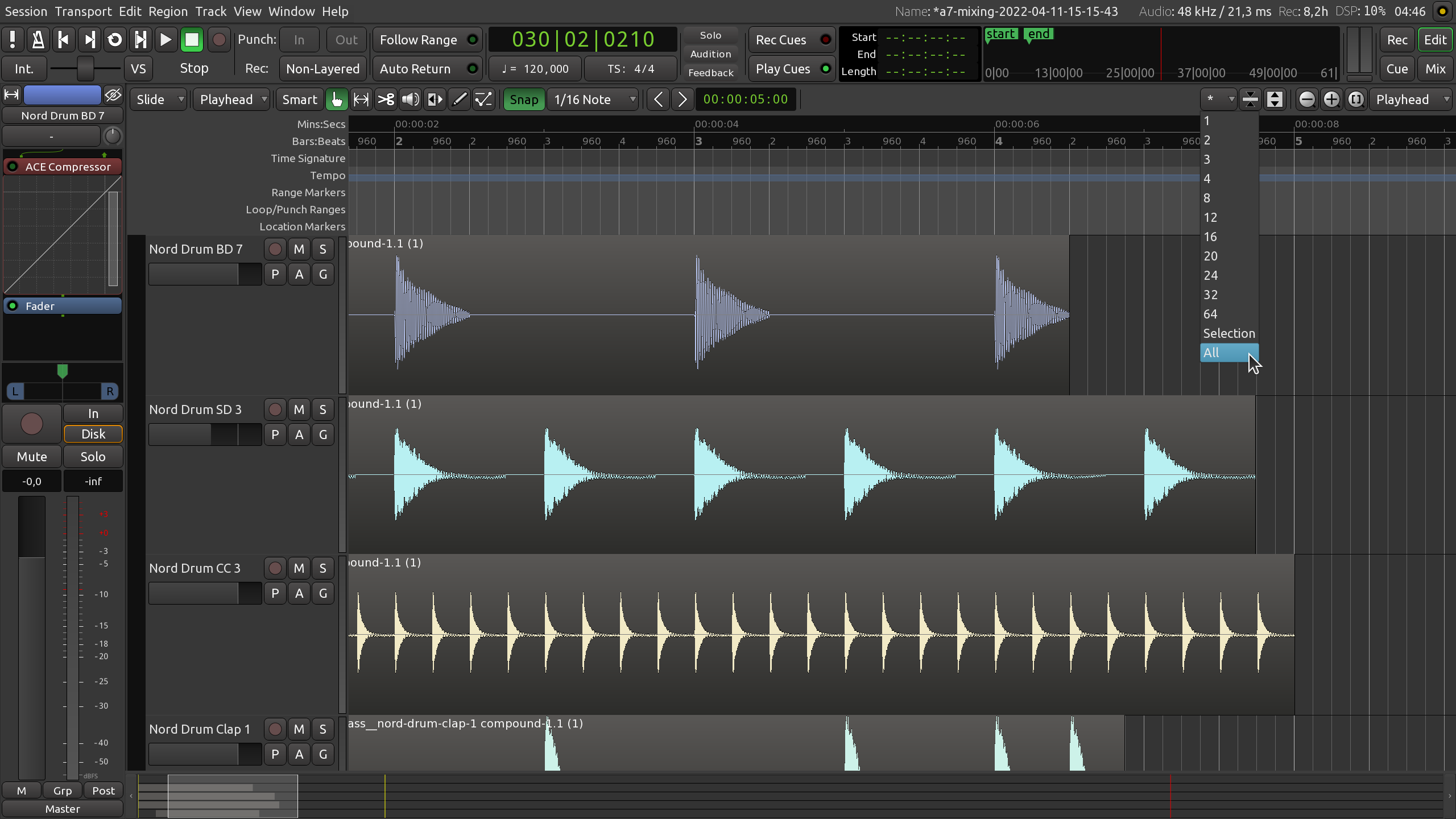
- Click on the Zoom to Session button (third button in the zoom options):

- You should now have a nice overview of your whole session, like this:
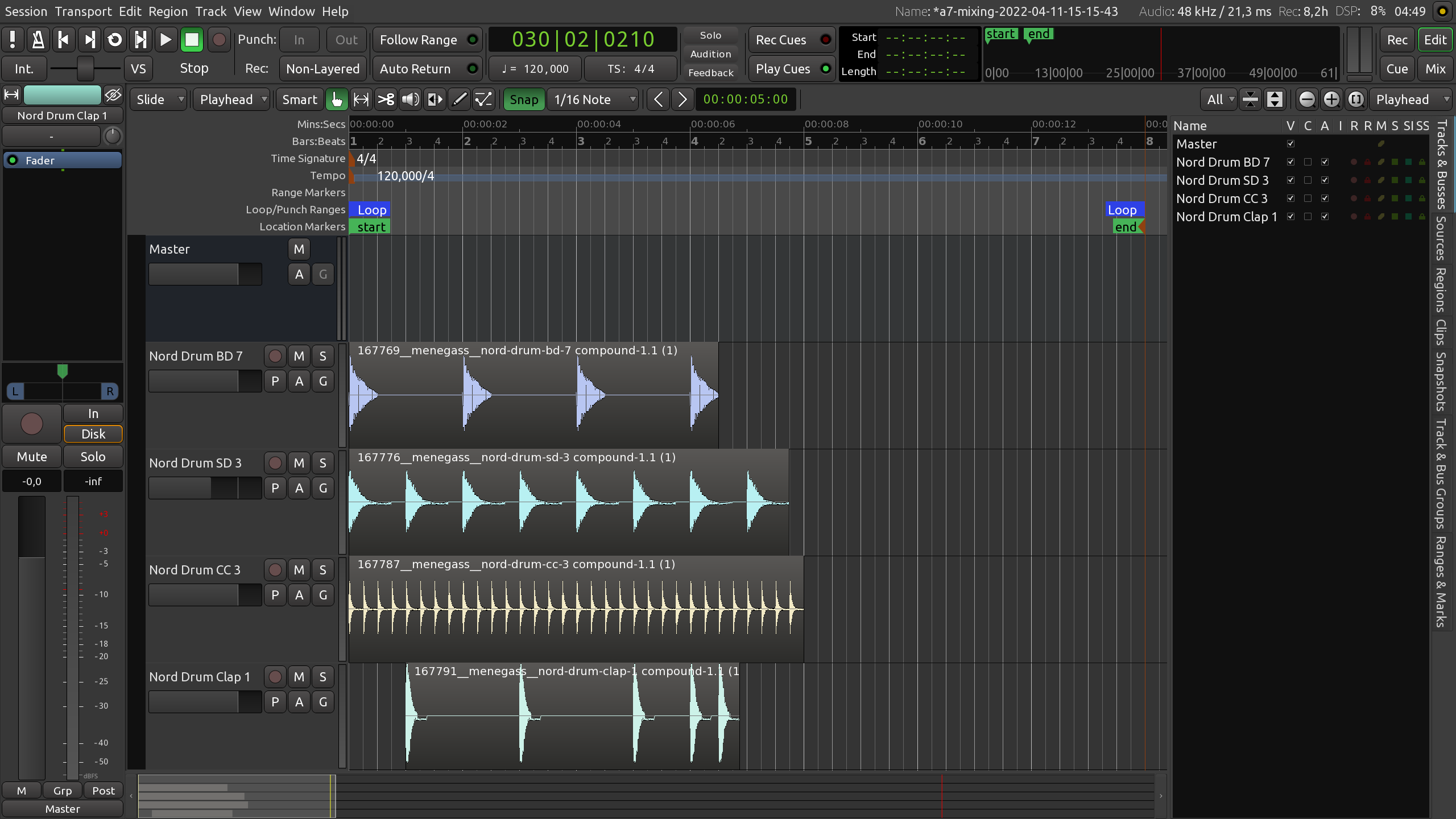
Listen to your piece one last time and make sure you hear everything the way you want (any Solo or Mute button you forgot to deactivate? Any volume adjusment left to do? etc.)
Start and End Markers
Finally, make sure the start and end markers on the location markers timeline are in the right place.
Everything included between the start and end markers will be exported, so you have to set the markers first if they are not in the correct position. In the image below, clearly the end marker is too far to the right in the timeline. This will result in a huge silence after the end of the piece (that is, between the last region and the end marker).
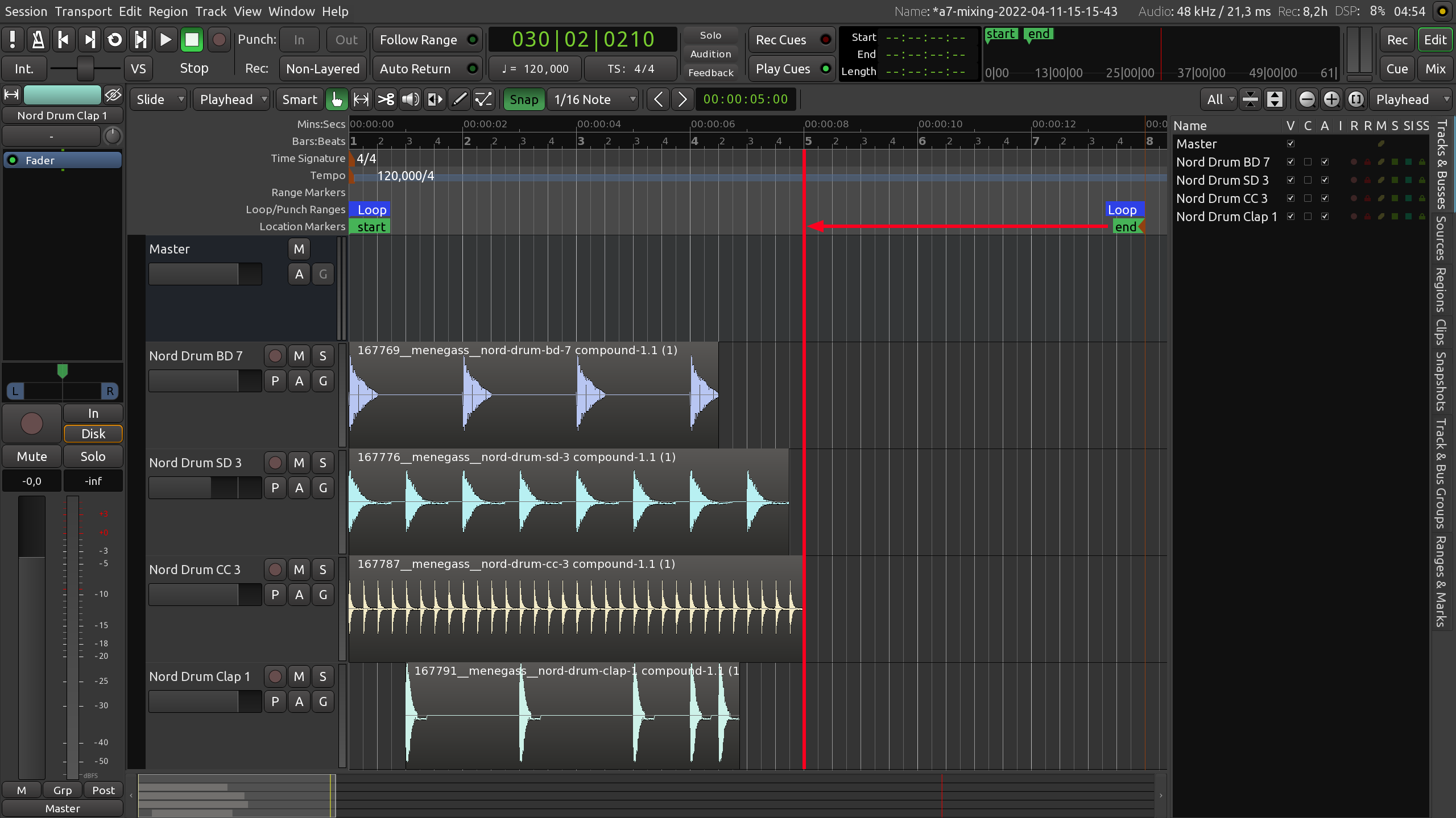
If your end marker is too far after the end of your piece, click and drag it to the left until it is pretty close to the end of the very last region of your composition.
Export it!
To export a session, use the top menu:
Session > Export > Export to Audio File(s).... This will open up a dialog box
with a number of options.
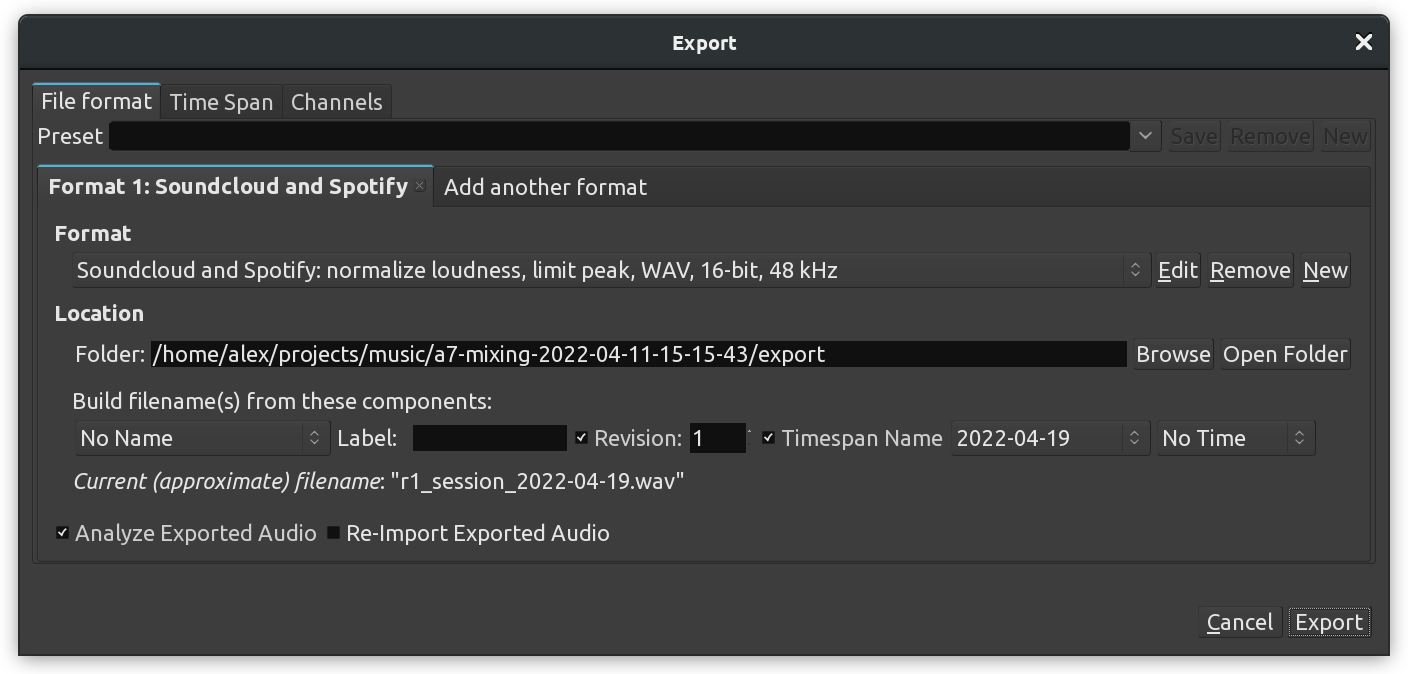
- Preset
- This is NOT where you write the file name. Don’t worry about this field now.
- Format
- This allows you to choose the file format (WAV, MP3, OGG, FLAC, etc.). The default is CD (Red Book), which will give you a 16-bit WAV file with 44.1kHz sample rate.
- Add another format
- If you’d like to export in more than one format at the same time, click on this tab.
- Location
- This is the place where you will find the file after it is saved. By default,
it is in the
exportfolder that lives inside your main session folder. You could also click Browse and select the Desktop, for example. - Label
- This is where you can create a unique name for the file. Ardour will
automatically append the session name to the exported file, so if you don’t
write anything here the name may end up something generic like
my-session.wav. Use this field to give a unique name to your file.
Having chosen your options, click Export. After the operation is finished, you can find the file using your file browser.
Export is handled through the Master bus, so the final file will include all the sounds from tracks and busses that were routed to it. This will include any normalizing, fading, panning, and automation you have created, along with the individual edits made to the regions as well. If any of the tracks have the Mute or Solo buttons engaged, this will also affect which tracks will be heard in the exported file.
Normalization
Sometimes the rendered audio is either too loud or too quiet to match demands imposed by various popular streaming services like YouTube or Spotify. Ardour provides a tool called Loudness Assistant to help with that.
In layman terms, it analyzes everything that goes through the Master bus, estimates how loud the signal is, and then suggests correcting it upwards or downwards so that overall loudness would be just about right for this or that popular streaming service.
While you can apply loudness (gain) correction directly to the Master bus’s output and benefit from having more manual control over the result, the most convenient way is to apply normalization at the exporting stage. You can do that two ways:
Just pick a popular service in the drop-down list under Formats. Ardour has presets for Apple Music, Deezer, Spotify, YouTube etc.
If the service is not listed in the presets, click the Edit button to open a dialog with advanced exporting settings, enable Normalize, choose Loudness rather than Peak, and then set the desired LUFS value.
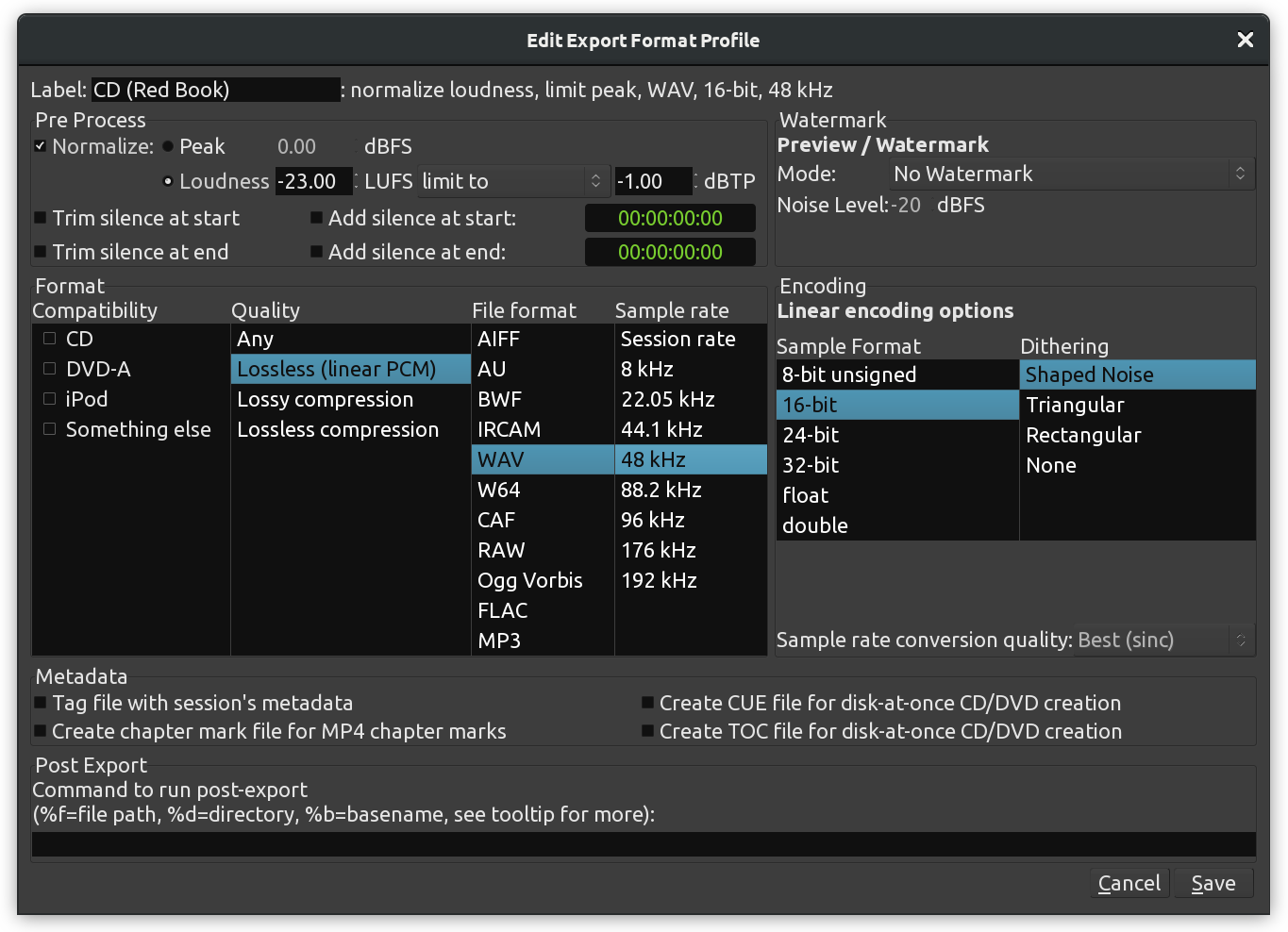
Continuing
At the end of this chapter, you now have an exported stereo mix representing your entire session. You may also want to know how to export individual regions or selected ranges from your session. This will be covered briefly in the next two chapters.
Next: EXPORTING REGIONS